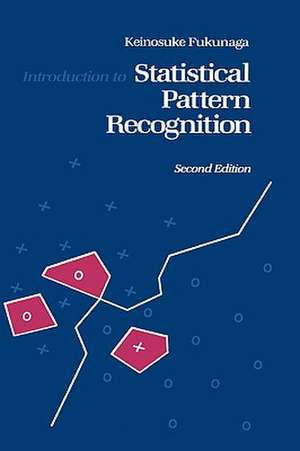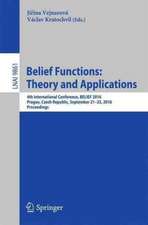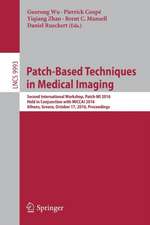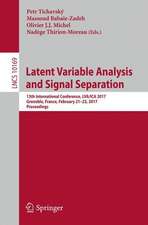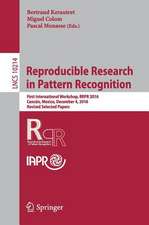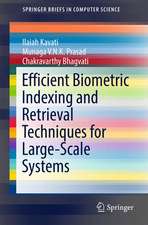Introduction to Statistical Pattern Recognition
Autor Keinosuke Fukunagaen Limba Engleză Hardback – 25 oct 1990
Preț: 304.29 lei
Preț vechi: 472.48 lei
-36% Nou
Puncte Express: 456
Preț estimativ în valută:
58.23€ • 60.95$ • 48.46£
58.23€ • 60.95$ • 48.46£
Carte tipărită la comandă
Livrare economică 24 martie-07 aprilie
Preluare comenzi: 021 569.72.76
Specificații
ISBN-13: 9780122698514
ISBN-10: 0122698517
Pagini: 626
Dimensiuni: 152 x 229 x 34 mm
Greutate: 0.98 kg
Ediția:Revised
Editura: ELSEVIER SCIENCE
ISBN-10: 0122698517
Pagini: 626
Dimensiuni: 152 x 229 x 34 mm
Greutate: 0.98 kg
Ediția:Revised
Editura: ELSEVIER SCIENCE
Cuprins
Preface
Acknowledgments
Chapter 1 Introduction
1.1 Formulation of Pattern Recognition Problems
1.2 Process of Classifier Design
Notation
References
Chapter 2 Random Vectors and Their Properties
2.1 Random Vectors and Their Distributions
2.2 Estimation of Parameters
2.3 Linear Transformation
2.4 Various Properties of Eigenvalues and Eigenvectors
Computer Projects
Problems
References
Chapter 3 Hypothesis Testing
3.1 Hypothesis Tests for Two Classes
3.2 Other Hypothesis Tests
3.3 Error Probability in Hypothesis Testing
3.4 Upper Bounds on the Bayes Error
3.5 Sequential Hypothesis Testing
Computer Projects
Problems
References
Chapter 4 Parametric Classifiers
4.1 The Bayes Linear Classifier
4.2 Linear Classifier Design
4.3 Quadratic Classifier Design
4.4 Other Classifiers
Computer Projects
Problems
References
Chapter5 Parameter Estimation
5.1 Effect of Sample Size in Estimation
5.2 Estimation of Classification Errors
5.3 Holdout, Leave-One-Out, and Resubstitution Methods
5.4 Bootstrap Methods
Computer Projects
Problems
References
Chapter 6 Nonparametric Density Estimation
6.1 Parzen Density Estimate
6.2 kNearest Neighbor Density Estimate
6.3 Expansion by Basis Functions
Computer Projects
Problems
References
Chapter 7 Nonparametric Classification and Error Estimation
7.1 General Discussion
7.2 Voting kNN Procedure — Asymptotic Analysis
7.3 Voting kNN Procedure — Finite Sample Analysis
7.4 Error Estimation
7.5 Miscellaneous Topics in the kNN Approach
Computer Projects
Problems
References
Chapter 8 Successive Parameter Estimation
8.1 Successive Adjustment of a Linear Classifier
8.2 Stochastic Approximation
8.3 Successive Bayes Estimation
Computer Projects
Problems
References
Chapter 9 Feature Extraction and Linear Mapping for Signal Representation
9.1 The Discrete Karhunen-Loéve Expansion
9.2 The Karhunen-Loéve Expansion for Random Processes
9.3 Estimation of Eigenvalues and Eigenvectors
Computer Projects
Problems
References
Chapter 10 Feature Extraction and Linear Mapping for Classification
10.1 General Problem Formulation
10.2 Discriminant Analysis
10.3 Generalized Criteria
10.4 Nonparametric Discriminant Analysis
10.5 Sequential Selection of Quadratic Features
10.6 Feature Subset Selection
Computer Projects
Problems
References
Chapter 11 Clustering
11.1 Parametric Clustering
11.2 Nonparametric Clustering
11.3 Selection of Representatives
Computer Projects
Problems
References
Appendix A Derivatives of Matrices
Appendix B Mathematical Formulas
Appendix C Normal Error Table
Appendix D Gamma Function Table
Index
